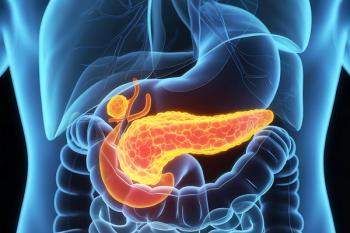
- The Application Notebook-06-01-2011
- Volume 0
- Issue 0
Isolation of Benzylideneacetophenone from a Crude Reaction Mixture
Benzylideneacetophenone forms the central core for a variety of important biological compounds, known collectively as chalcones. Many of these compounds have significant medicinal value as they demonstrate antibacterial, antifungal, antitumor, and anti-inflammatory properties.
Benzylideneacetophenone forms the central core for a variety of important biological compounds, known collectively as chalcones. Many of these compounds have significant medicinal value as they demonstrate antibacterial, antifungal, antitumor, and anti-inflammatory properties. They are synthesized by an aldol condensation between a benzaldehyde and an acetophenone in the presence of NaOH as catalyst. In this application note, benzylideneacetophenone is isolated from a crude reaction mixture using flash chromatographic technique, including consideration for scale-up.
Figure 1: TLC of crude mixture.
TLC of the Crude Reaction Mixture
TLC on silica gel Si60F254, developed in n-hexane/ethyl acetate 19:1, detection UV 254nm.
Sepacore Configuration
Cartridge 12 × 150 mm, prepacked with silica gel 60, 40–63 µm
2 Pump modules C-605
Fraction collector C-660
Control-Unit C-620 with SepacoreControl software
UV Photometer C-635
Figure 2: Separation 1.
Separation Conditions
Eluent: see below
Flow rate: 10 mL/min
100 mg crude mixture, dissolved in n-hexane and some drops of toluene (solubility of the sample in pure n-hexane too low)
Loading: approx. 0.4 mL
1. Test runs
Separation 1
Eluent: n-hexane with 2% ethyl acetate, isocratic
Figure 3: Separation 2.
Separation 2
Eluent: n-hexane with 1%, 2% and 3% ethyl acetate, step gradient. Each step was initiated after a component was completely eluted (at the end of a peak).
TLC Check
TLC on silica gel Si60F254, developed in n-hexane/ethyl acetate 19:1, detection: UV 254 nm
1 = Benzaldehyde
2 = Benzylideneacetophenone
3= Benzophenone
Figure 4: TLC check of Separation 2.
Recovery
Fraction 7: 65 mg
2. Scale-up
Calculation of the scale-up factor
Cartridge 12 × 150 mm: cross sectional area = 1.13 cm2
Cartridge 40 × 150 mm: cross sectional area = 12.56 cm2
Scale-up-factor = 12.56 cm2 / 1.13 cm2 = 11.1 ≈ 10
Figure 5: Scale-up separation.
Separation conditions
Eluent: n-hexane with 1%, 2% and 3% ethyl acetate, step gradient
Sample: 1 g crude mixture, dissolved in n-hexane/toluene 7:3 (solubility of the sample in n-hexane too low, toluene is eluted as front peak)
Injection volume: 2 mL
Figure 6: TLC check of scale-up.
TLC-Check
TLC on silica gel Si60F254, developed in n-hexane/ethyl acetate 19:1, detection: UV 254 nm
Recovery
Fraction 13–16: 512 mg crystalline product, mp 57 °C
BUCHI Corporation
19 Lukens Drive, Suite 400, New Castle, DE 19720
tel. (302) 652-3000, fax (302) 652-8777
Website:
Articles in this issue
over 14 years ago
Hydroxyethylstarches (HES)over 14 years ago
Aggregated Singletons for Automated Purification WorkflowNewsletter
Join the global community of analytical scientists who trust LCGC for insights on the latest techniques, trends, and expert solutions in chromatography.





